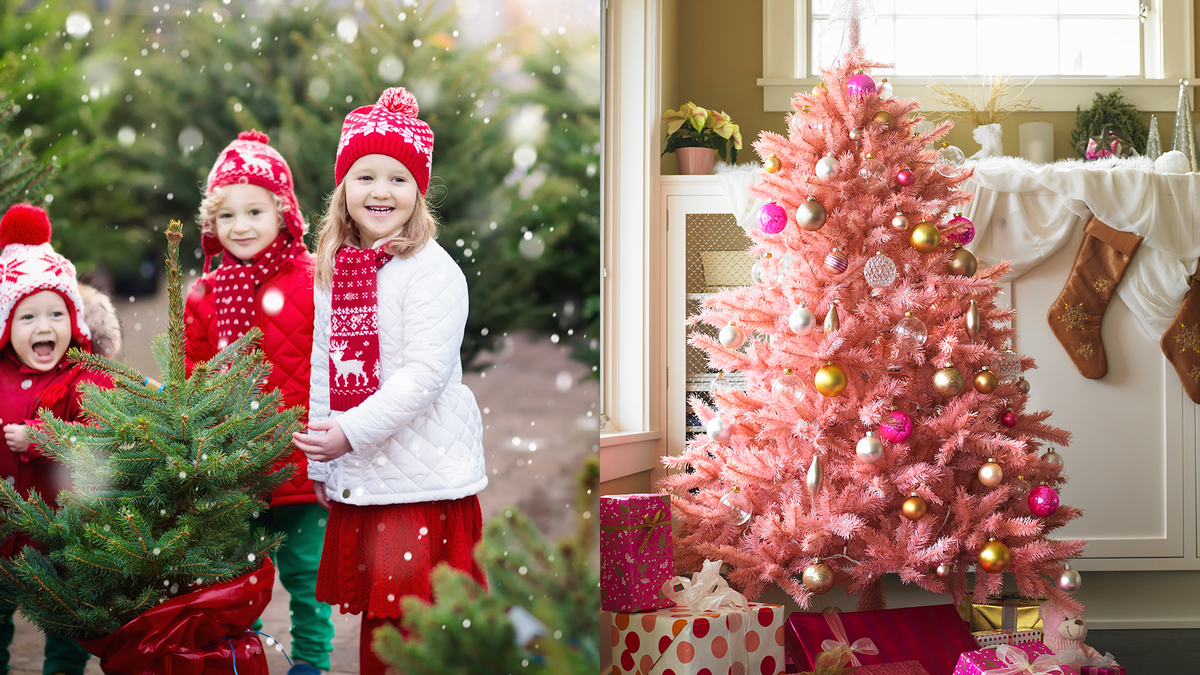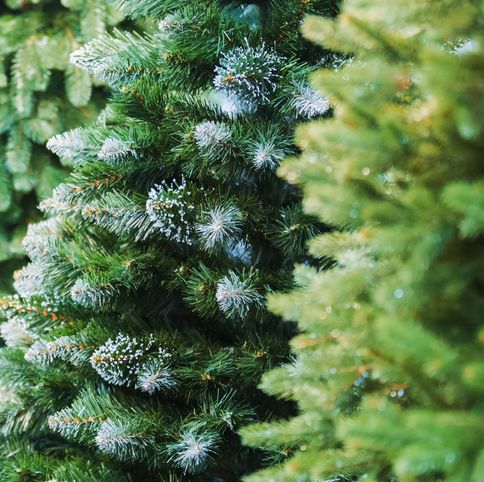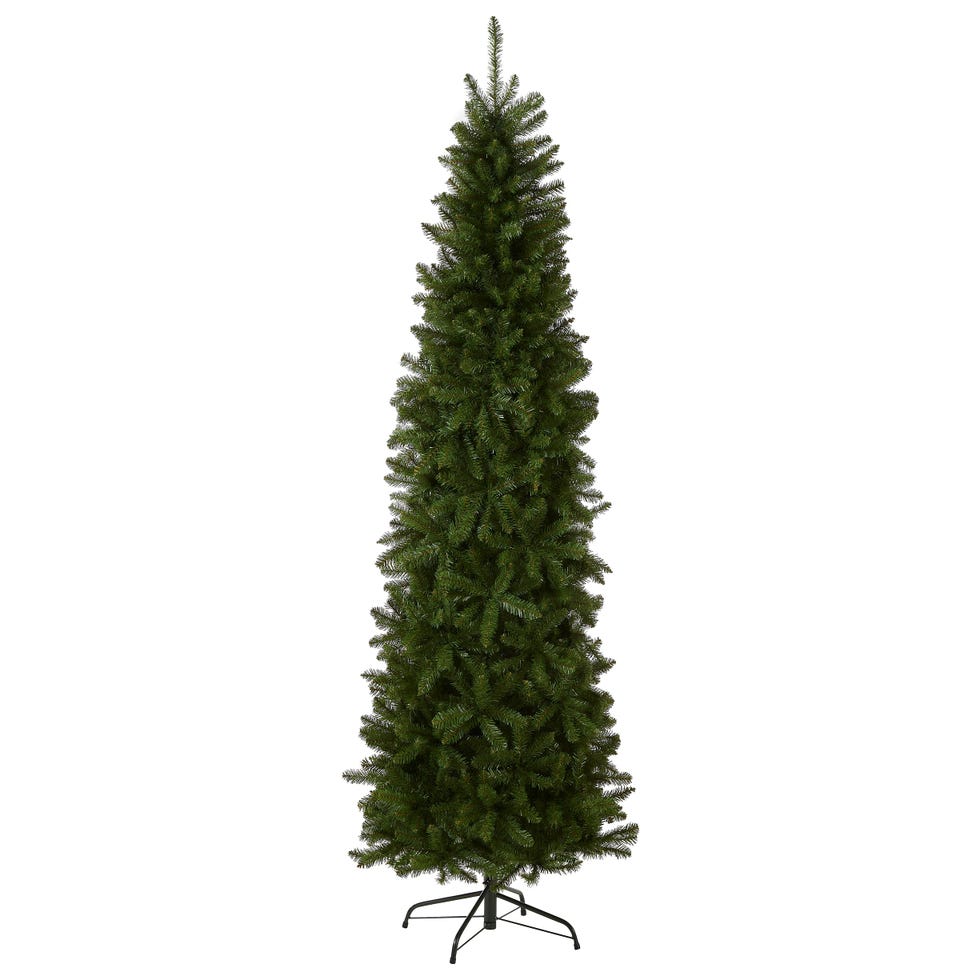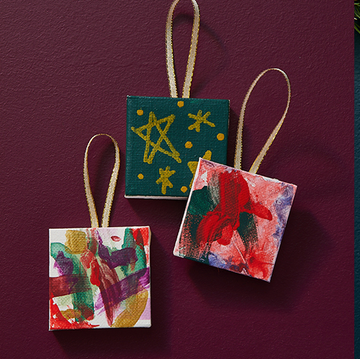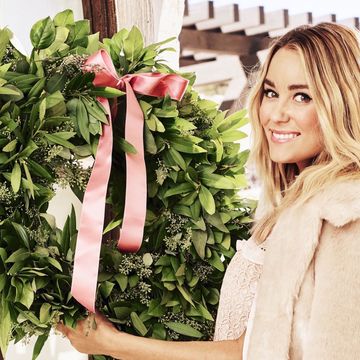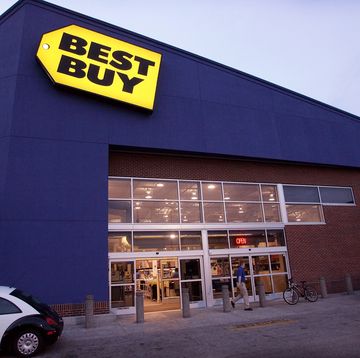The halls are decked. The yule has been lit. There's just one thing that remains: the Christmas tree. But when it comes time to trim the tree, which has lovelier branches: a real Christmas tree or a fake one? While much of it depends on your specific needs and lifestyle, these are the pros and cons for each type of tree.
The Case for Real Trees
Real Christmas tree fans really love their trees: According to a 2023 survey by the Real Christmas Tree Board, a whopping 94% of respondents who plan to buy a real tree this year agree with the statement: “The scent of a real Christmas tree will bring me joy this season." And that's not the only thing that fans love. "Choosing real trees from a local farm supports our local economy as well and positively impacts our environment," says Mary Lou Carolan, Executive Director of the Cornell Cooperative Extension in Dutchess County. "These trees emit oxygen during the growing seasons. This season, depending on where you go, these farms offer shoppers holiday experiences such as wagon rides, gift shops, baked goods and treats as well as help with finding, cutting and binding your tree. Once the season is over, many municipalities will use these trees for mulch and beautification projects.” And that's not all — here are some more reasons to look into real trees:
- They support farms. Not only that, but Cornell's Jen Fimbel, Agriculture/Horticulture Program Leader and Ag Navigator, and Heather Brenner, the Community Horticulture Coordinator, also point out the "multiplier effect" that has on the local economy: Buying trees from a farm also supports subsidiary businesses like equipment sales and maintenance, provides local jobs and supports local tourism (which, in turn, helps shops and restaurants, etc.). It's a virtuous cycle.
- They have that special Christmas tree smell. It's a big draw! Marsha Gray, Executive Director of the Real Christmas Tree Board, says "Forty percent of people who are switching to a real tree this year say it’s because of the scent."
- They're a natural part of the environment. "They are 100% biodegradable, so they can be recycled and reused for mulch," Gray says. "Plus, for every real Christmas tree a farmer harvests, they plant at least one new tree." In addition, Fimbel and Brenner add that while they're growing, real trees can help reduce carbon in the atmosphere and provide shelter and habitat for animals and other beneficial organisms.
- They create holiday traditions. "We like to say that the journey is part of the joy that a real tree brings from finding your perfect tree, getting it in or on the car, setting it up and decorating it," Gray says. A 2019 survey says that getting a real Christmas tree is one of the top holiday traditions that parents enjoyed when they were young — ranking it over getting photos with Santa or cookie swaps. Now, parents want to pass on the tradition to their own kids.
- They don't take up storage space. If you're living in a home where attic, garage or closet space is at a premium, an artificial Christmas tree can eat up a lot of your storage budget. Real trees aren't saved from year to year, so that space can be used for your garlands and lawn decorations instead.
The Case for Fake Trees
Fake trees are enormously popular — The American Christmas Tree Association (ACTA), which doesn't take a side in the real-vs.-fake-tree debate, ran its yearly consumer poll for 2023, and found that 77% of consumers plan on displaying a fake tree this year. The main reason? "Choosing an artificial Christmas tree is all about convenience," says Chrissy Rae, Senior Merchandising Manager at the National Tree Company. "Unlike real trees, artificial ones offer a hassle-free holiday experience with a quick set up, easy storage and minimal maintenance." There's more:
- Artificial trees don't need to be cared for. No watering to remember, no dropped needles to clean. You can leave to go visit family for weeks on end, and when you come back it'll be just as you left it. According to the ACTA, "Sixty-five percent of consumers listed easy set-up and take-down, and 49 percent listed easy maintenance, as the primary reason for purchasing an artificial Christmas tree."
- You can get them with the lights already on. "Pre-lit options eliminate the need to string lights manually," Rae says. "And advanced technologies enhance the overall holiday experience with convenient one-plug setup and festive lighting effects." She says to look to The National Tree Company's options like Dual Color LED, which can toggle from all-white lights to multicolor ones, and to see what pre-lit trees can do.
- Buying an artificial tree is a one-time cost. Sure, you can pay more than $1,000 for a top-of-the-line artificial tree — and many are much more affordable than that — but that's a cost that gets defrayed over the number of years that you use it. The ACTA says that a good artificial tree can last ten years and, if it's well cared for, that number can stretch to 20. Meanwhile, real trees have to be re-purchased every year, and the price is subject to economic forces like inflation.
- They're gentle on the allergies. Some people who are sensitive to mold or terpenes (the compounds that give Christmas trees their scent) will find themselves vulnerable to coughing, wheezing and asthma attacks, especially in small spaces. According to UCLA Health, "Christmas trees can carry about 50 different types of mold and can increase the number of mold spores in an apartment by more than six times."
- You can make them fit in odd spaces. If your living space has quirky layout, you might still be able to find a fake tree that fits. This includes flat-backed fake trees that can go flush up against a wall or ones that are designed to fit in a corner. Or, if you don't need an odd shape, you can go for an unusual color, like a pink tree or a silver one!
- The environmental impact can be mitigated. Fake trees have to be manufactured (usually from plastic or other non-biodegradable materials), shipped and, eventually, disposed of (and few can be recycled). But, on the other hand, they can be re-used, while real trees have to be grown, fertilized, kept pest-free, transported and disposed of every year. In 2018, the ACTA did a "life-cycle assessment" of the two, and found that, when all the factors are considered, "artificial trees have a more favorable effect on the environment if reused for at least five years." If you plan on using your artificial tree for a longer time, the environmental impact tips even further in your favor. Of course, the ACTA also acknowledges that lots of individual factors also play into the environmental impact of either kind of tree, especially when it comes to disposal. (Incinerating a real tree is a lot worse versus composting it.)
The Bottom Line: The bottom line is that there is no one, "right" answer to the question — it all depends on your needs, your space and your family's priorities. One thing is for sure: Once the tree is up, you're going to need some great ornaments and unique decorations to put on them!
